If you’re a construction company owner or manager, you’re aware of how crucial it is to keep your biggest investment—equipment—in good condition.
Taking good care of your equipment not only ensures that construction projects are finished on time and within budget, but extends the equipment’s useful life and minimizes its loss of value over time, i.e., depreciation.
With that in mind, here are six strategies you can employ to increase the efficiency and decrease the depreciation rate of your equipment.
In this article...
Adhere to Usage Guidelines
Before we dive into how adhering to the manufacturer’s usage guidelines can assist you in minimizing equipment loss of value, let’s briefly cover what depreciation is.
According to The Constructor:
Depreciation represents the decline in the market value of a piece of equipment due to age, wear, deterioration, and obsolescence.
Given this definition, it’s clear that your brand-new or used equipment will start to lose value from the moment you bought it even if it sits in storage unused.
However, there’s still plenty you can do to slow the depreciation rate and get the most out of your equipment during its lifetime or until its resale.
Therefore, the first thing you can do is consult the manufacturer’s operation and maintenance (O&M) manual, specifically the recommendations concerning the equipment’s optimal usage, such as the number of operating hours, load capacity, and operating temperature.
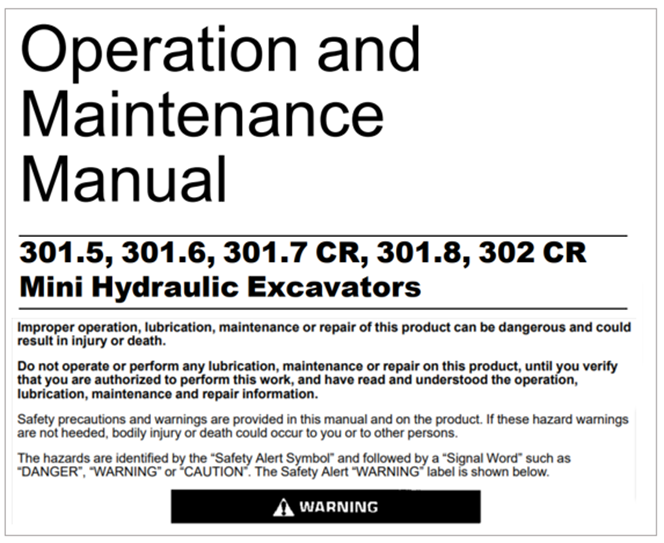
As most O&M manuals state, overworking or improperly using the equipment not only endangers the safety of your workers but also increases its wear-and-tear, thus accelerating its depreciation rate.
Conversely, this decline in value can be slowed down when the recommended inspection and maintenance procedures are followed along with keeping the equipment’s operation within the set parameters, such as load limits and operating temperatures.
However, given the often tight construction deadlines, there might be times when an equipment operator thinks it’s necessary to push the equipment beyond its limits.
To address this, contractors should rely on operator training programs (covered next), efficient site supervision, and remote equipment operation monitoring, like in this example.
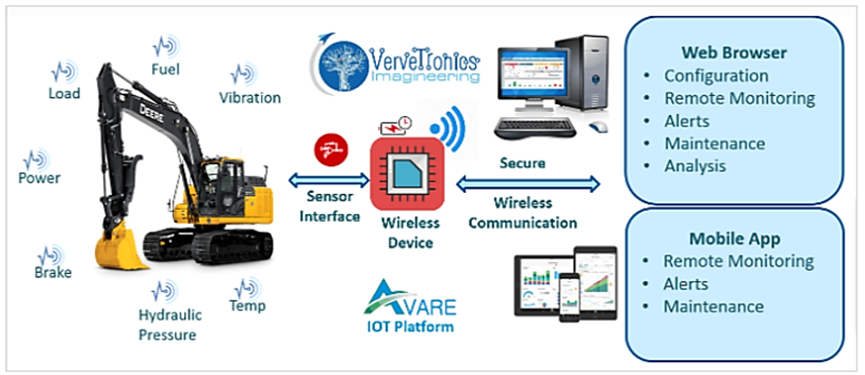
As you can see, contractors can utilize the equipment’s built-in or subsequently installed sensors and equipment monitoring systems that provide real-time data on machine performance.
That way, if an operator exceeds recommended parameters, supervisors can receive immediate alerts, intervene, and provide guidance to prevent equipment misuse.
Overall, adhering to usage guidelines will not only enhance worksite safety and project efficiency but also minimize equipment depreciation.
Conduct Operator Training
As mentioned, another strategy to keep workers safe, prolong the equipment’s life, and minimize depreciation is conducting operator training.
Simply put, training operators on how to correctly use the equipment is a must for many reasons, including worker safety, operational efficiency, regulatory compliance, and the financial health of your construction company.
Therefore, extended equipment useful life, slower depreciation, and higher resale value are welcomed consequences of investing in comprehensive operator training programs.
We asked construction experts if they agreed:
Training our employees on proper equipment usage and care is a critical component. We conduct regular training sessions that cover best practices for handling and maintaining tools. This not only extends the lifespan of our equipment but also ensures safety on job sites.
Ben Connell, Owner, Connell Roofing
Among other things, training programs educate operators about the potential consequences of misusing or overworking the equipment and encourage them to report any concerns or issues about the equipment’s performance to their supervisors.
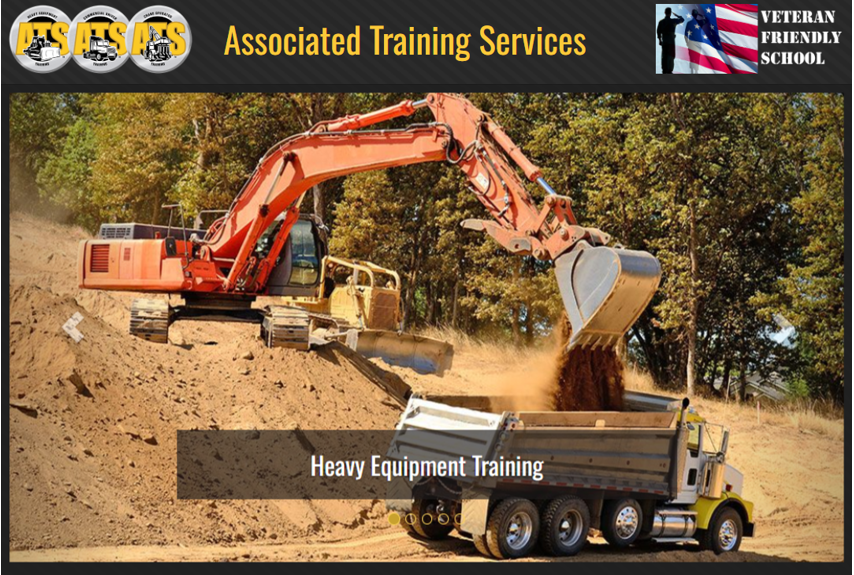
That way, they’re less likely to mishandle the equipment and damage it or nearby equipment, thus reducing their value and increasing depreciation.
Moreover, you can find or design extra training courses that focus on specific heavy equipment types and ways to reduce wear-and-tear, and maximize their performance.
For example, bulldozer operator training can incorporate the following performance-optimizing advice, courtesy of Raka Rentals:
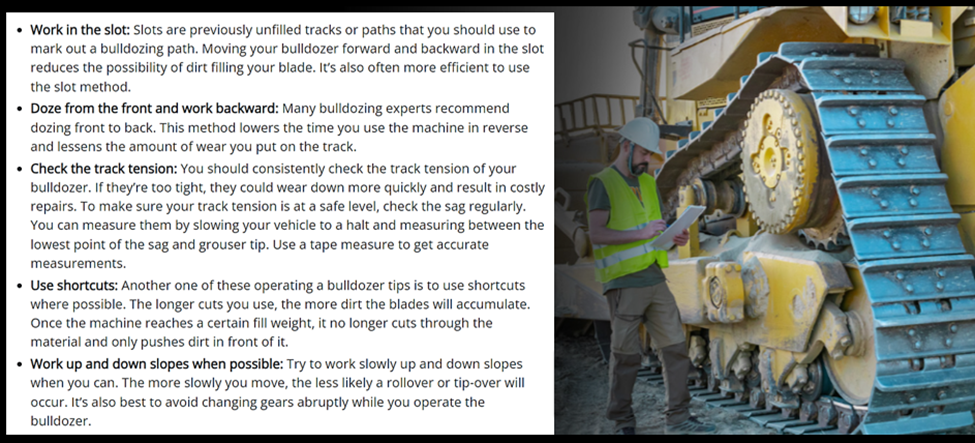
Naturally, when setting up your operator training, you can turn to those who built the equipment, i.e., original manufacturers, many of which offer their own programs.
Due to technological advances, such programs often include simulator or even virtual reality (VR) training, which enables operators to learn best practices in a safer and more affordable training environment.
To recap, ensuring your operators are well-trained in safe and efficient equipment operation helps protect their safety and preserve the equipment value, i.e., minimize its depreciation.
Schedule Regular Equipment Maintenance
Naturally, regular maintenance is a cornerstone of ensuring efficient construction operations and minimizing equipment depreciation.
In other words, if you want to preserve the equipment’s value in the long term, there’s simply no substitute for scheduling preventive maintenance tasks and monitoring their performance.
To do that, you should establish a comprehensive maintenance program, including regular equipment inspections and detailed record-keeping of past maintenance and repairs.
Considering the number and different types of construction equipment and their maintenance needs, scheduling and tracking all these processes is easier said than done.
That’s why construction companies are moving away from paper- or spreadsheet-based checklists and adopting digital solutions like GoCodes Asset Tracking.
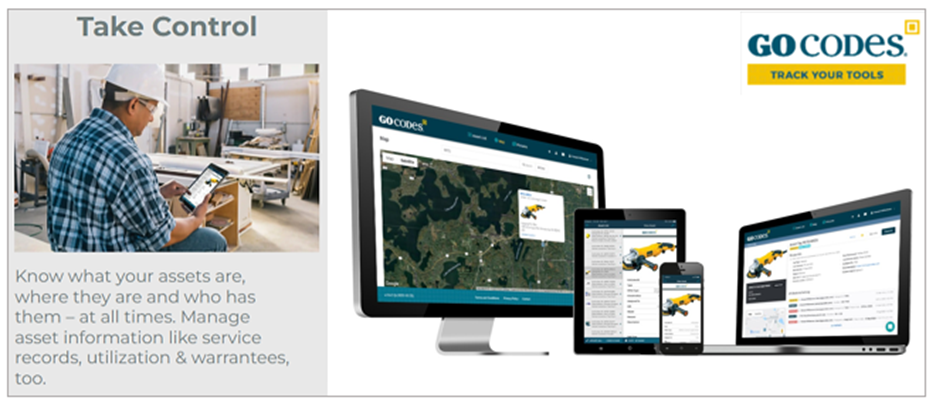
So, how does GoCodes Asset Tracking enable contractors to take control of equipment management processes, including keeping maintenance records, monitoring equipment utilization, and tracking warranty and depreciation information?
It utilizes QR codes (attached to equipment and tools), cloud-based software (available on any internet-connected device), and an in-app scanner (available on smartphones and tablets).
The integration of these components allows managers, workers, and maintenance technicians to simply scan the QR code label and instantly access the equipment’s info page, where all the details about past and scheduled maintenance and inspections are available.
You can see this simple and fast process here.
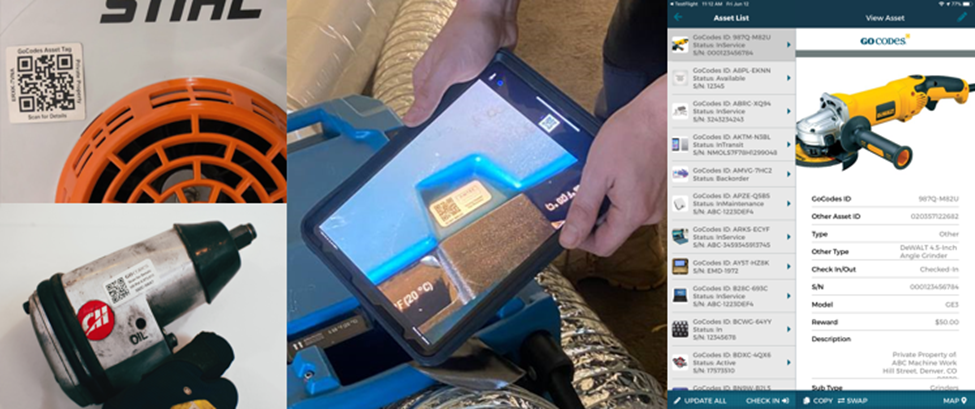
This easy-to-use and affordable system enables you to schedule preventive maintenance, assign maintenance tasks, and set up automatic alerts that notify technicians when and what tasks they should perform.
And this is just one of GoCodes Asset Tracking’ many features, meaning you can digitize and automate other equipment management processes, such as tracking equipment users and locations.
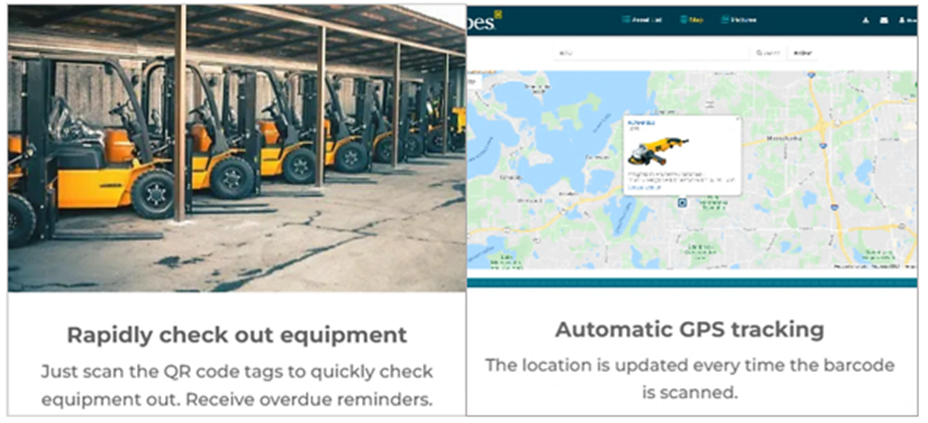
Naturally, all the above allows you to ensure equipment is always serviced on time, which not only prevents major breakdowns, project delays, and costly repairs but also helps minimize the equipment’s loss of value over time.
Lastly, it provides you with accurate maintenance and repair history for each piece of equipment, which can also be a price-increasing factor when reselling it.
All things considered, scheduling regular equipment maintenance with the help of user-friendly software available to all users helps you maintain optimal equipment efficiency, safety, and longevity, thus minimizing its depreciation.
Rotate Equipment Usage
When equipment usage is tracked, construction companies can avoid overworking the equipment, which causes higher levels of wear and tear and accelerates their depreciation.
In other words, when project data is combined with tracking equipment utilization, this allows contractors to rotate equipment used for certain tasks, thus extending its lifespan, and minimizing depreciation.
So, how can you determine whether a piece of equipment is overworked?
Here are five warning signs.
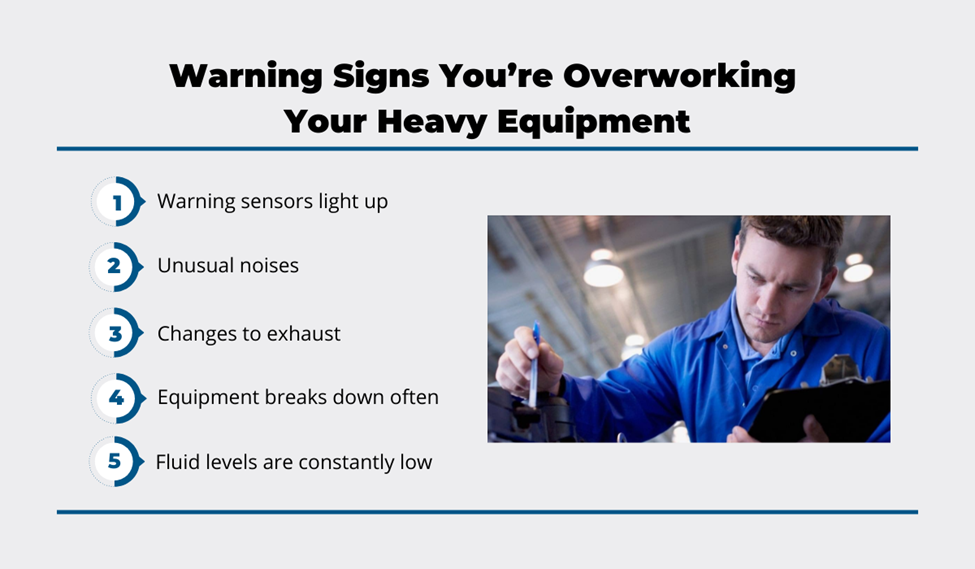
Although most of these warnings are easily detectable, they’re often ignored on account of tight project schedules or unclear and overly complex problem-reporting procedures.
Again, using software solutions to streamline daily equipment inspections before and after use, and easily report any identified issues can—coupled with operator training—ensure that these and other signs of overworked equipment are not overlooked.
As mentioned, tracking equipment utilization can be enhanced through the use of machine sensors and equipment management software that records operating hours, fuel consumption, and other relevant data for each machine.
From there, usage data can be combined with project-specific information to determine which equipment is best suited for specific tasks based on factors like capacity, efficiency, and worksite conditions.
Based on this, companies can create data-based equipment usage plans that outline which equipment should be used for particular tasks on different projects.
In summary, to extend the equipment lifespan and minimize depreciation, construction companies should monitor equipment for signs of being overworked, enable operators to easily report issues, and rotate equipment usage in line with specific project conditions.
Keep the Equipment Clean
Going hand in hand with preventive maintenance is ensuring your equipment is regularly cleaned from dirt and debris that accelerate wear and corrosion, leading to faster depreciation.
Moreover, keeping the equipment clean generates other benefits, such as increased performance and fuel efficiency, more reliable functioning of electronic components, faster inspections, and improved company image.
Without further ado, let’s move to how you can ensure your heavy equipment is efficiently cleaned.
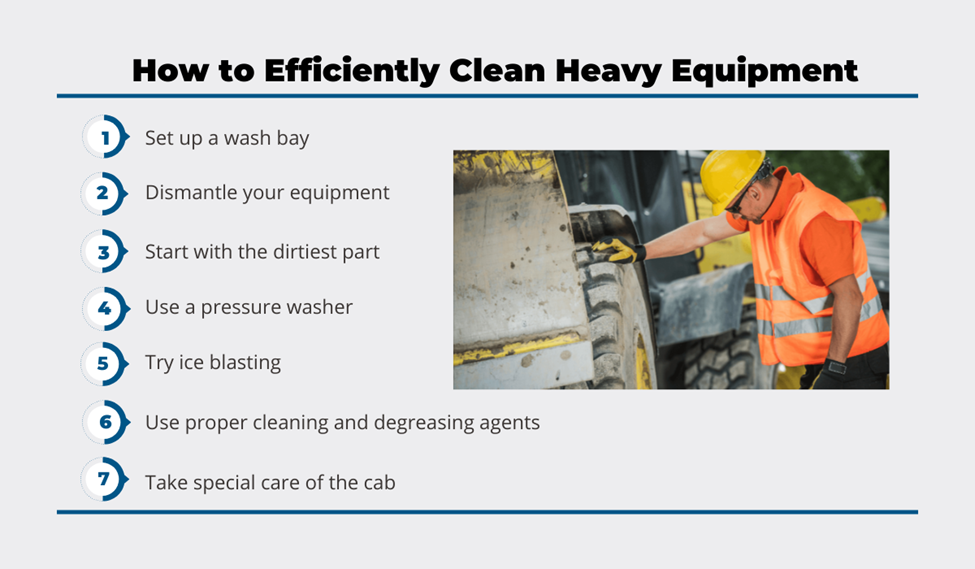
As you can read more about each of these tips in our above-linked article, let’s just touch upon a few of these methods that might need some explanation.
For instance, having a designated area where heavy equipment like bulldozers, excavators, and graders can be efficiently cleaned will not only save time but also enable you to comply with environmental protection regulations.
The reason is that cleaning and degreasing agents used for cleaning and other contaminants found on your equipment are harmful to the environment and should therefore be properly disposed of, which a dedicated wash bay can ensure.
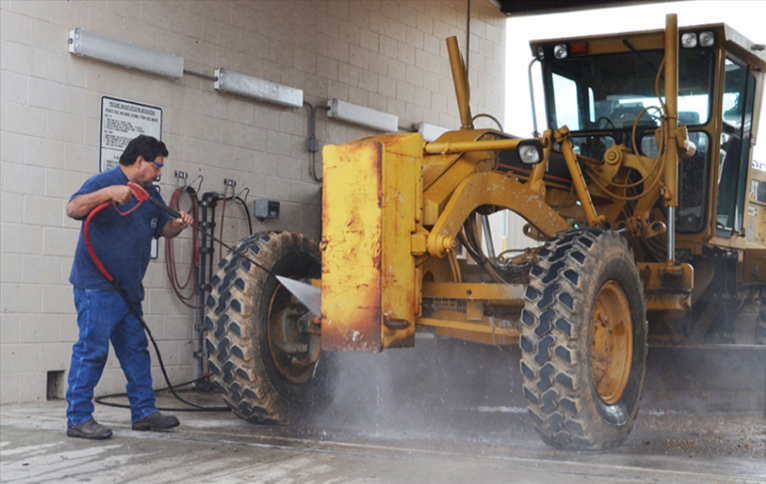
Another great tip is to start with the components that collect the most dirt, debris, and grease, which is typically the machine’s undercarriage.
You can also try a new, more environmentally friendly, and less abrasive cleaning method, i.e., blasting dirty surfaces with dry ice particles.
Long story short, just like preventive maintenance, regularly cleaning your equipment helps slow down wear and tear and preserve its efficiency, therefore minimizing depreciation.
Store the Equipment Properly
Last but not least, protecting construction equipment from weather-related damage is another crucial factor in minimizing depreciation.
Although leaving equipment exposed to the elements should be avoided whenever possible, the largest depreciation-minimizing effects can occur when equipment is stored for extended periods.
To prevent damage from condensation, corrosion, and extreme hot or cold temperatures, you should store equipment in covered areas like warehouses or equipment sheds.
If indoor storage is not possible, you should use securely fastened equipment covers or tarps, like these custom-made mini excavator covers.
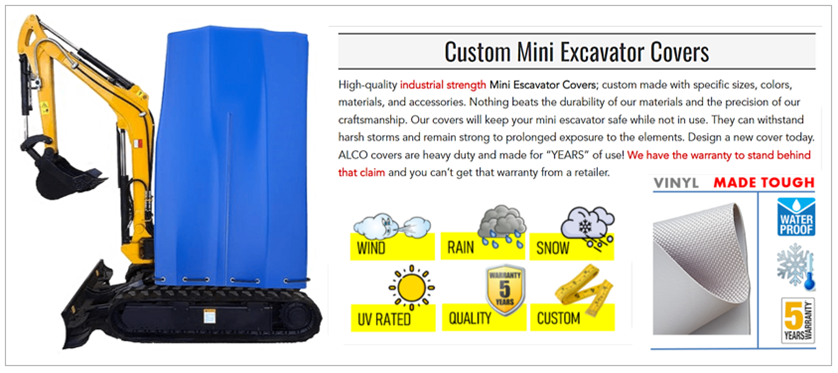
Construction equipment stored outside should be parked in a dry place, protected from the wind and direct sunlight.
Additionally, it should be positioned on a level surface to prevent uneven weight distribution or tire damage.
When it comes to longer-term storage, performing thorough maintenance checks before storing equipment is essential for preserving its function and resale value.
This includes cleaning, lubrication, and addressing any issues that might worsen during storage, such as condensation in empty or half-full fuel tanks.
While it’s recommended to top off fuel tanks, fluids like engine oil and coolant should be drained before extended storage.
Likewise, equipment batteries should be disconnected or removed, stored in a cool, dry place, and charged periodically.
Lastly, both outdoor and indoor storage areas should be equipped with security measures like alarms and surveillance to deter theft or vandalism.
To recap, proper storage of equipment can significantly reduce weather-related wear and tear, ultimately extending their lifespan and slowing down depreciation.
Conclusion
Wrapping up, these six strategies for minimizing equipment depreciation are essential for keeping your equipment in top condition, helping you maximize its operational efficiency and minimize the inevitable loss of value over time.
In doing so, you can use a range of proven and tested methods like regularly maintaining and cleaning equipment in line with usage guidelines and combine them with digital tools to automate and streamline these processes.
Ultimately, applying these strategies can prolong the useful life of your equipment and help you get the most out of your investment, including a higher price if you decide to resell equipment at some point.





